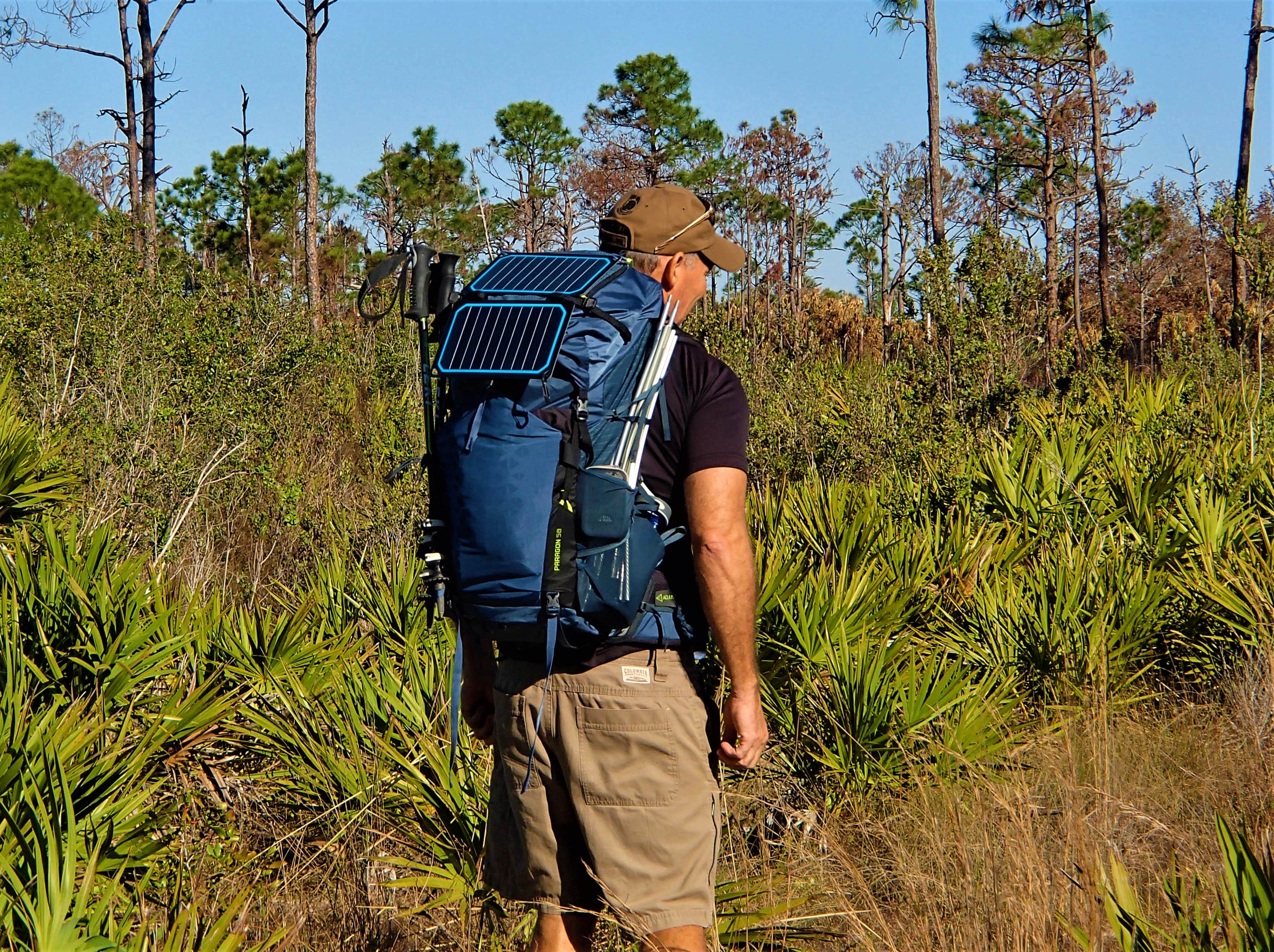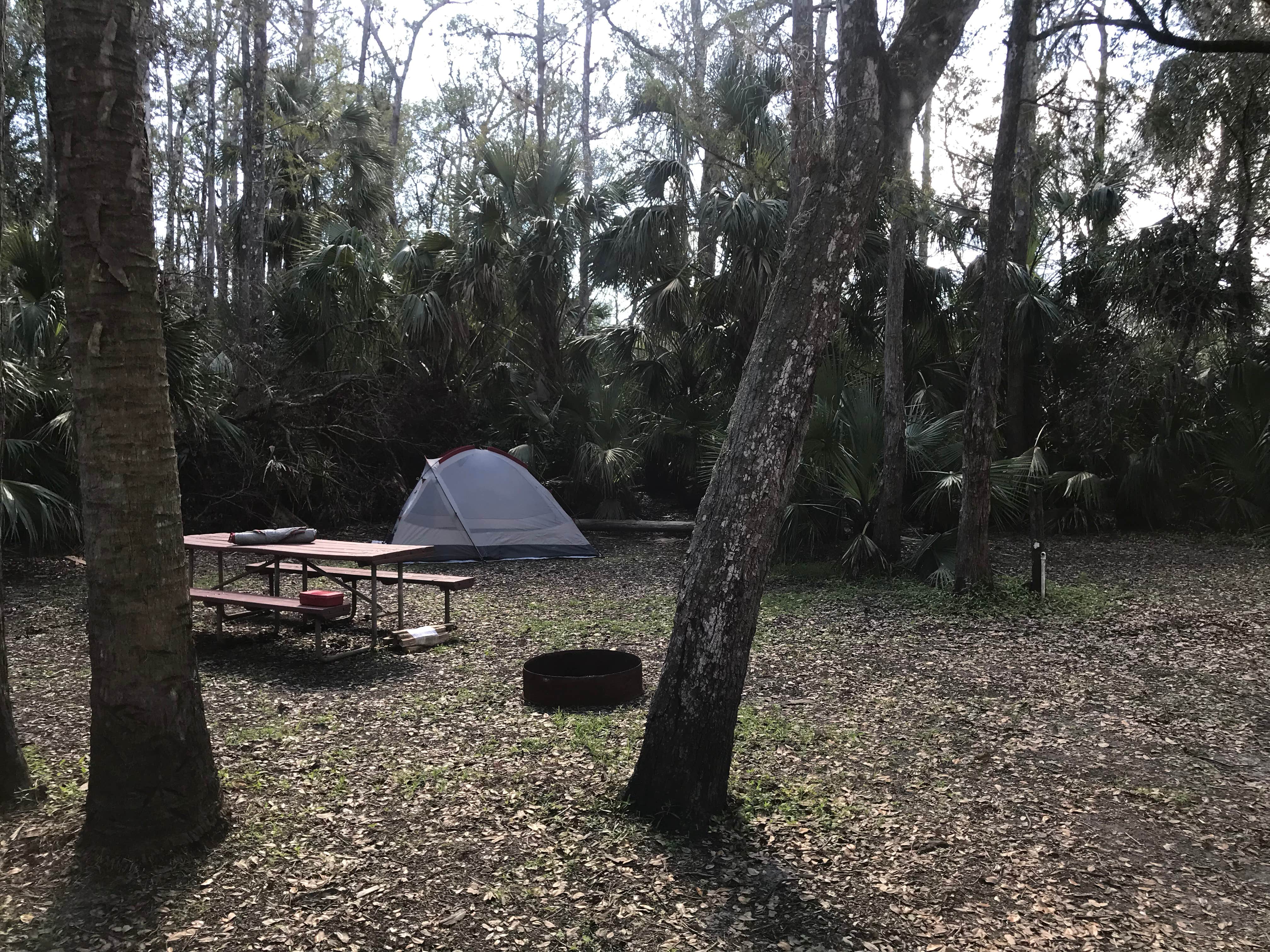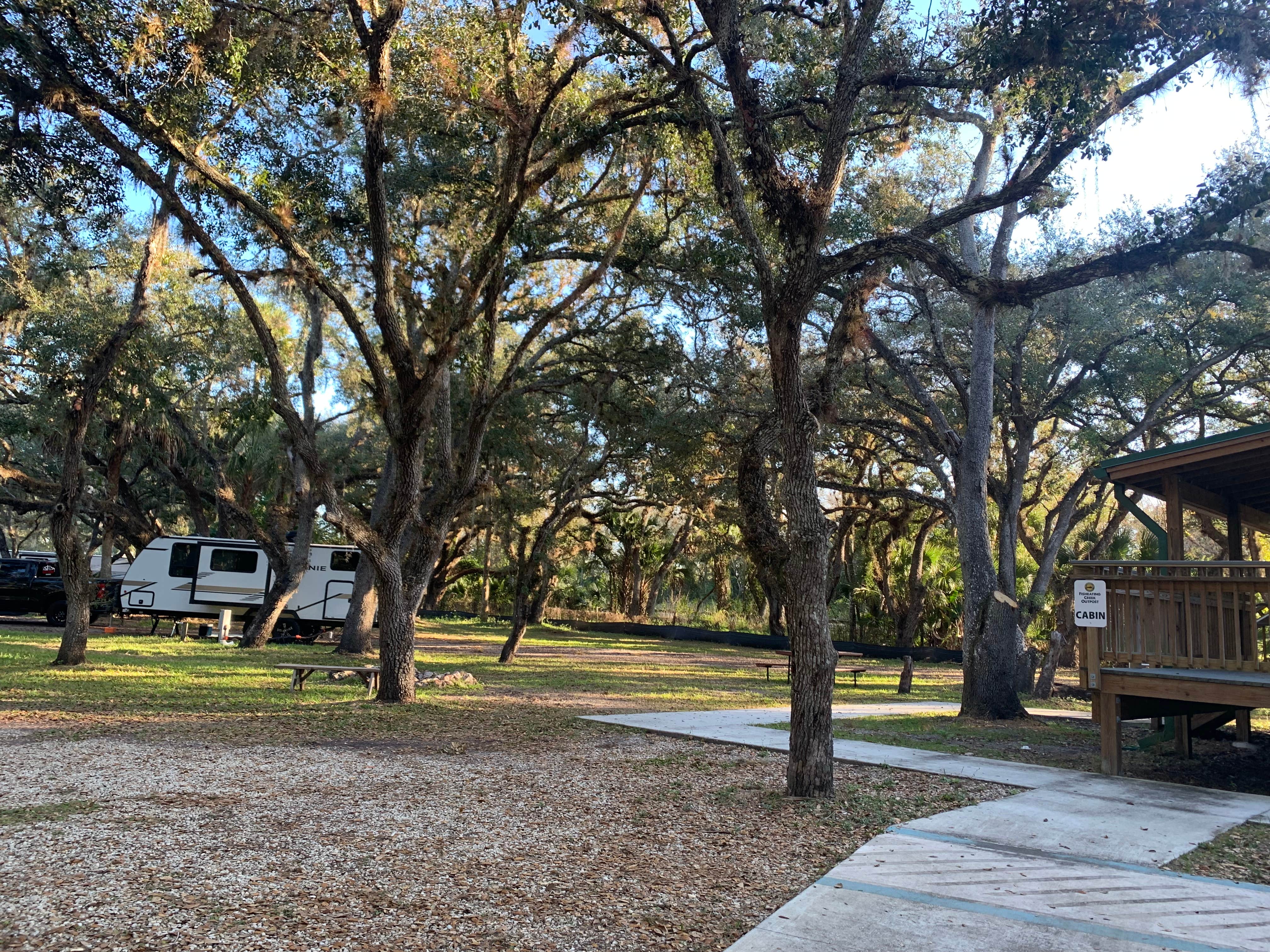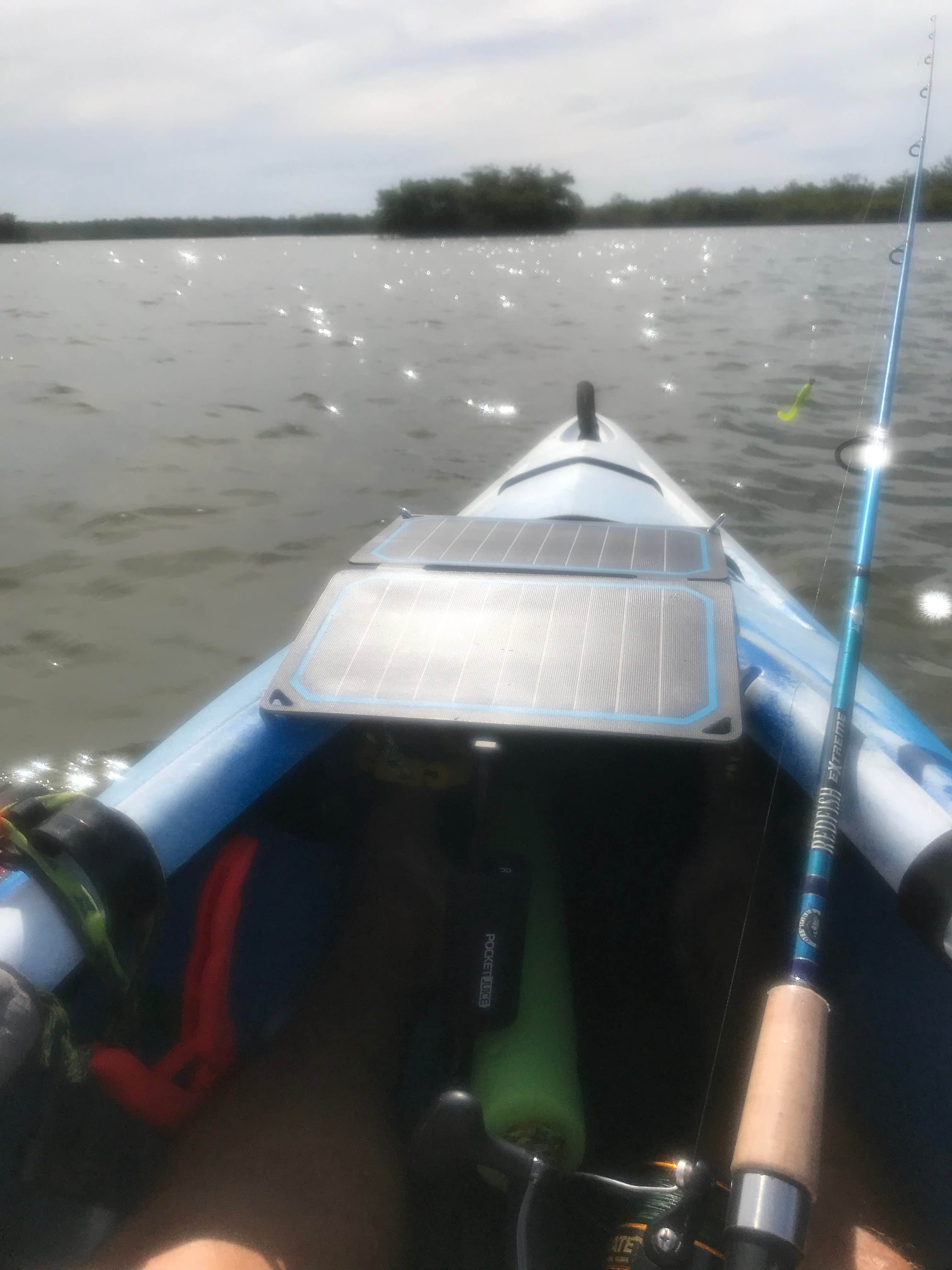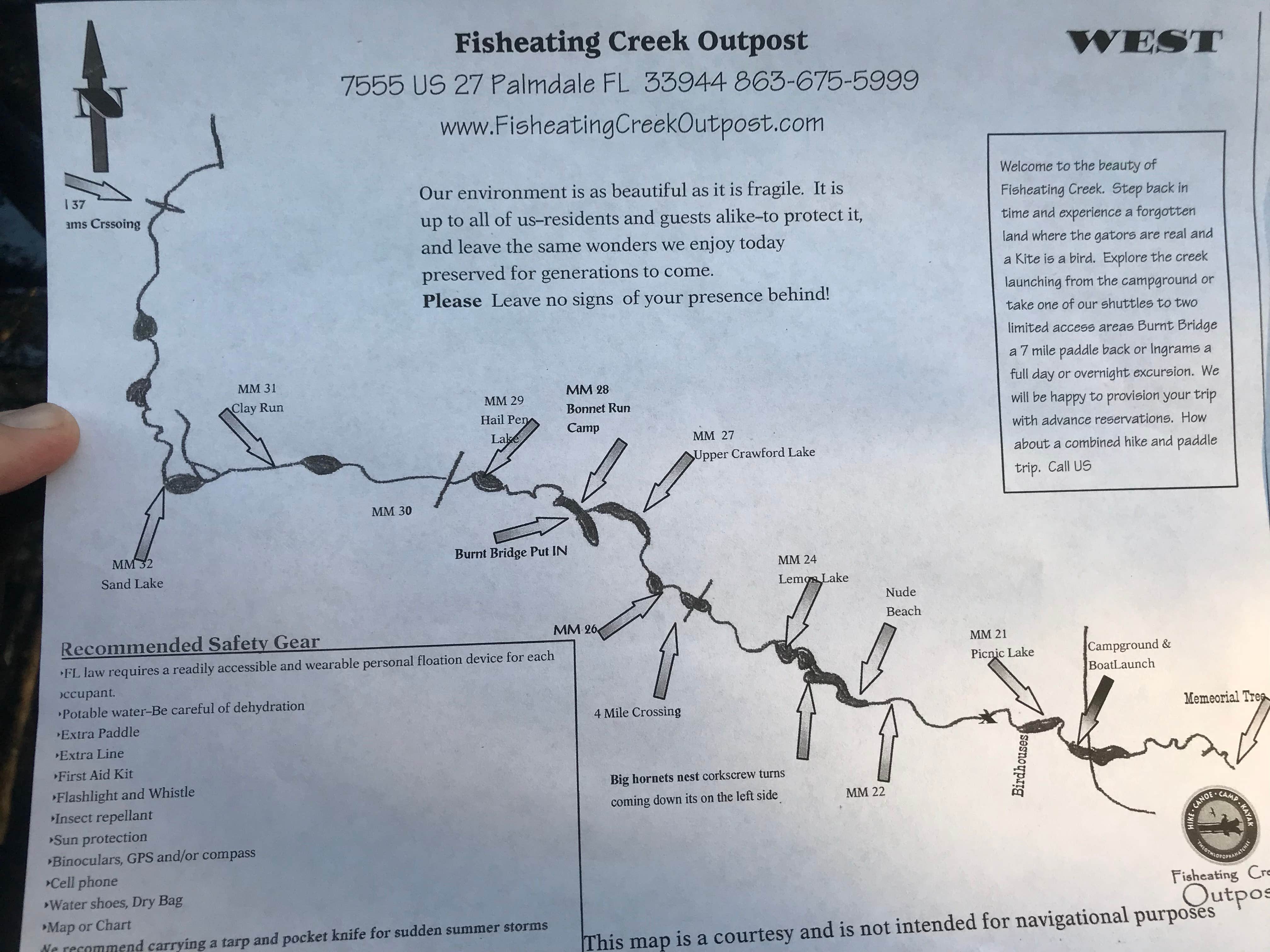Campground Review: Fisheating Creek Outpost and Campground, Palmdale, FL
At last minute, I was able to secure one of two available campsites over the phone…but even the website recommends emailing them for reservations because of an overload of phone calls. Fisheating Creek Outpost and Campground http://www.fisheatingcreekoutpost.com/ in name, may not sound appealing to most campers…but you'd never know it by the sold out sites on a daily basis.
Securing a campsite at Fisheating Creek Outpost during the winter months, Nov-May 1, is a gamble. Weather is cooler and more predictable than summer months. Northerners migrate south like winged songbirds and usually pack out all south Florida campgrounds during winter months… and this particular campground is popular with the locals.
Fisheating Creek Outpost and Campground is only 1.5 hours NE from me, and affords some variety, for a Florida campground. Unbeknownst to me Cub Scout Pack 141 from West Palm was holding their annual jamboree campout at Fisheating Creek the first weekend I camped. So there were throngs of youngsters, but still plenty of space here not to feel crowded…and they were having a great time.
I should interject that September 2017 Hurrican Irma did a number on this area, along with the actual creek water rising ten feet. So the staff and volunteers are doing a remarkable job under the circumstances to return this campground to a state of normalcy. Speaking of staff, Stephanie at registration and Ryan at the boat livery were extremely helpful, informative and polite. I have found young people from this area of Florida extraordinarily polite and respectful.
The office, on the right when you first cross the RR tracks and enter the campground, which is on elevated stilts had two foot of water running through it during the Hurricane, so they temporarily conduct business out of a tent at the entrance until renovated. Staff and volunteer crews have worked tirelessly to make the campground and creek usable, clean and debris free.
One must realize this is south central Florida, so expect gators, wild hogs, and snakes. With as much activity that abounds at the campground, you'll likely not see them in the campground, as much as you will see them directly outside of it. Prepare for mosquitos…though I only dealt with mosquitos for about 15 minutes at sunset and my tent site was on the river.
Fisheating Creek is the draw. There is a livery connected with the Outpost/Campground where you can either rent kayaks or canoes to paddle upstream or you can opt to reserve a spot on the shuttle to drop you 8 or 16 miles upstream for a fee. http://www.fisheatingcreekoutpost.com/showpage.asp?page=rates#canoes Float time downstream for 8 miles is roughly four hours.
The shuttle fee was excessive, for my budget, so I chose to paddle upstream from my campsite. It should be noted, that non-campers can use the Outpost livery or put-in for a mere $2 per person. Actual boat rental prices are reasonable.
The paddle upstream is pleasant in a kayak, and not burdensome as Fisheating Creek was not flowing swiftly…around 3.5 ft. Families in laden canoes were paddling upstream without much difficulty even with a deeper draft. Blue blazes on Cypress trees mark the way as it is mostly narrow and twisty. During rainy season and higher water levels, you will need the blazes to find your way through the Cypress maze. Occasional paddle placards with a directional arrow are also posted. Fisheating Creek is wild, no doubt about it. Swimming is discouraged, as it is a dark tannin color and loaded with alligators. Passing paddlers that started 8 miles upstream stopped counting after 100, which is commonplace in these parts. Gators range in size from one to fourteen footers. I counted a couple dozen on each of my paddles upstream. Fortunately, it is illegal to feed alligators, and most people abide by the rules, so they are still wary and scoot upon close approach. Of course, none of this dissauded the Cub Scouts from their maritime fun, as they found a riverside rope swing that launched them into the dark depths. Reminder: Always check the Fisheating Creek water level website before planning a trip, if you are hopeful for a pleasurable paddle.http://www.fisheatingcreekoutpost.com/showpage.asp?page=waterlevels
Herons, egrets, wood stork, roseate spoonbills, ibis, pileated woodpeckers, osprey, buzzards and wood duck are plentiful and noisy when disturbed by your presence.
January 2018, the waters have only recently receded, so hiking trails were still quite swampy. Doable if you wear muck boots or water shoes. Part of the trails parallel along the creek.
Amenities: The campground is somewhat separated into two sections, the RV/Camper area is to the right and has its own loop, separate shower house/restroom with screened in pavilion area…and has more grassy area. The tent only area continues left past the livery and into a wooded, shaded area along the creek. The tent only area also has its own shower house/restroom. Both of which are dated, but clean.
There is a third camping area on the north end of the property around the western side of the swimming pond, where they do permit swimming. This area has a pavilion, picnic tables at campsites and separate tables for "day use" visitors…and a newer pit latrine. Campsites in this loop are also quite shaded.
None of the campsites offer much in the way of privacy. Sites above 60 provide more foliage between sites. At site 63, I was a distance from the showerhouse, but the campground positioned a Porta-potty in our loop.
Alternative: If you desired, you could bring your kayak or canoe (or rent one), either pay for the upstream shuttle or paddle upstream and camp along the river at any "high and dry" spot. The cost to park your vehicle at the campground is only $2 per individual…and it costs nothing to paddle upstream and camp with your own gear. Plenty of elevated sandy beach areas to tent camp and more where you can hammock. Although, I would not recommend ground sleeping without a tent, nor hammocking overnight without netting. I spoke with several parties camped upstream along the river. Realize, this is a wild river…"there are things that go bump in the night."
Be forewarned…because Fishingeating Creek Oupost and Campground are located on Rt.27 and 8/10th's of a mile north of Rt.29, the campground is within earshot of highway traffic noise. Ear plugs eliminate that noise, but I prefer hearing the sounds of nature during the night, particularly the bull alligator's roar.
Product Review: Renogy E.Flex 10 Folding Solar Panel with USB
The Renogy E.Flex 10 Folding Solar Panel with USB https://www.renogy.com/renogy-e-flex10-portable-solar-panel-with-usb-port/ arrived in a smal but smartly packaged box. The panels were folded and couched in protective foam cutouts. Beneath the panels were two small 1.85" aluminum carabiners and four 1.25" suction cups and a bifold instruction pamplet.
The technical information can be easily acquired from Renogy.com website: https://www.renogy.com/renogy-e-flex10-portable-solar-panel-with-usb-port/#tab_prd-specs but for quick reference…folded it measures 10.3"x6.3"x0.16", unfolded: 13.4"x10.3"x0.08"
By way of comparison, my only other solar panel experience is with a major competitor that is attached to my Gregory Baltoro GZ 75 pack. So this review will from a layman's perspective and neither technical nor exhaustive.
As a product reviewer for TheDyrt, I am honored to receive products for testing and evaluation at substantial discounts or no cost at all…and such is the case with the Renogy E.Flex 10 Folding Solar Panel with USB.
First look: When handling the E.Flex 10, if feels sturdy and appears durable even though it is wafer thin. There is no "flex" in the panels themselves, but rather in the "binder-style" fabric-covered plastic hinge between the two panels, so it can be folded book-like. The four cutout corner tabs have some flexibility in the material as well.
The exterior fabric on the solar panel side has a rubbery texture, whereas the opposite or outside has an oxford cloth.
I found the solar panel grid side to repel water…beading up and dripping off. The obvious weak link in the weatherproofing is the USB port. Keeping that in mind, if attaching to the exterior of your pack…keep USB port side facing downward to minimize water collection should you get caught in an unexpected cloudburst.
Attaching the Renogy E.Flex 10 to my kayak worked sufficiently well with the included carabiners. If my bow deck was wider, I would have experimented with the suction cups. Remember surfaces must be smooth and clean to adhere and hold securely. Salt brine residue on the bow deck also negatively effected the suction cups.
In additon to attaching the Renogy E.Flex 10 to my backpack and my kayak, I experimented by attaching it to the an interior house window, a tinted vehicle window and inside my lanai screening (which has a claimed 50 SPF). In SW Florida, we get ample blue sky, sun-filled days…so I was able to use the solar panels daily.
In my unscientific, non-technical testing fashion…I used a 4,000 mAh lithium ion battery power stick. In sustained direct sunlight, the E.Flex 10 took 3.5 hours to fully charge the power stick (which would roughly charge my smartphone two times).
My house windows are not tinted so charges times were uneffected. The lanai screen SPF claims must be inaccurate as similar charge times were observed. Only the heavily tinited auto glass substantially increased charge times.
When stationary and connecting the E.Flex 10 Folding Solar Panels directly to my smartphone, while using search engines and keeping three windows open, my phone continued to slowly charge. Note: with cloud coverage or intermittent shade when directly connected to the smartphone, a screen prompt pops up…"This accessory might not be supported" and offers a "Dismiss" tab. This is part of the Smart Auto-Optimization charging…which initially reduces charging (with shade) but permits the charger to return to the full solar power flow without the necessity to unplug and plug the device. Apparently, this is a feature some solar panels do not offer…so charging remains seamless.
In comparison, I found no difference in charge times between the Renogy E.Flex 10 and my GZ. To be fair, the dimensions of the E.Flex 10 were slightly larger…which could potentially impact that finding.
Durability: Time and continued use will tell. I've only used the E.Flex 10 for a month but it appears like it should hold up. However, I have obswerved a small pucker in the fabric on the binding, where the oxford cloth has separated from the plastic "hinge." Cause for concern? Probably not, but we will see.
Parting Shots: Perhaps I'm being picky, but I believe replacing the two aluminum carabiners with four Nite-Ize "S" carabiners, along with a weather resistant USB port or connector, and an optional USB daisy chain to connect two or more E.Flex 10's together so I could utilize a laptop or iPad in the backcountry would elevate the value and usefulness of the Renogy E.Flex 10.
Did I like it? Absolutely. It's simple to use and effective.
Would I invest in one? Yes. For $59.99 factory direct…it's a bargain!



